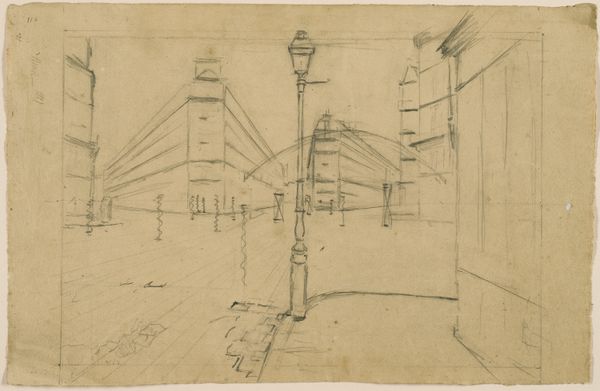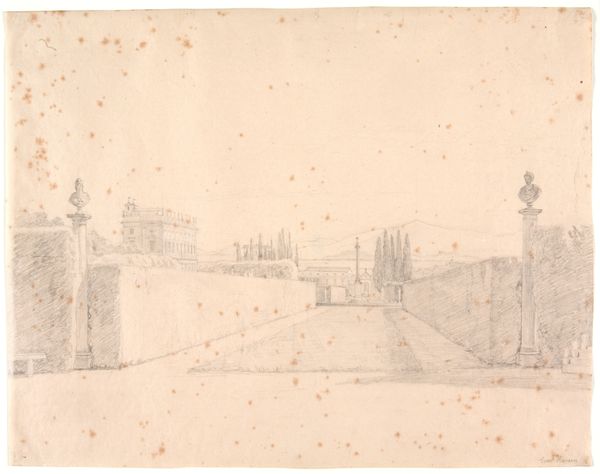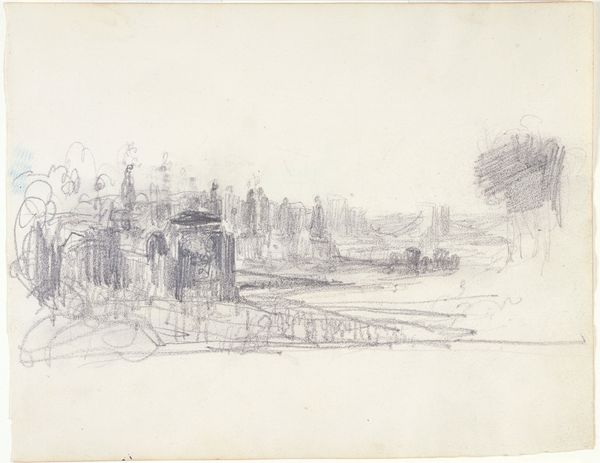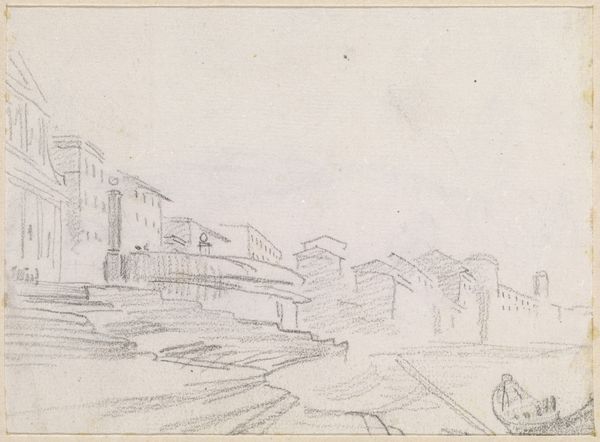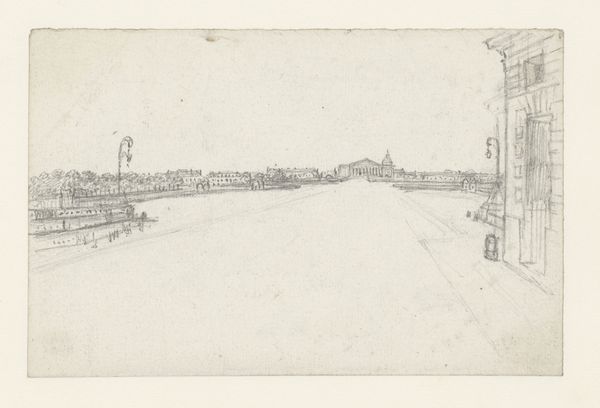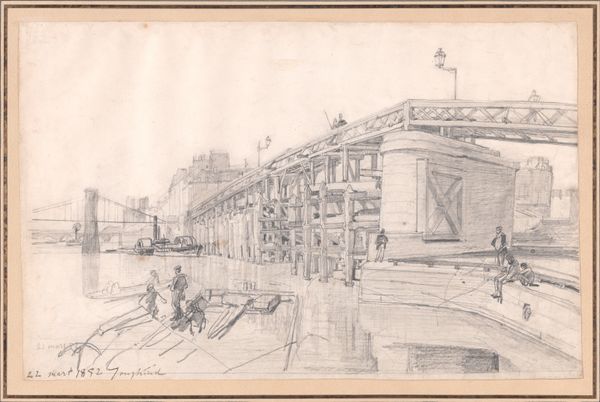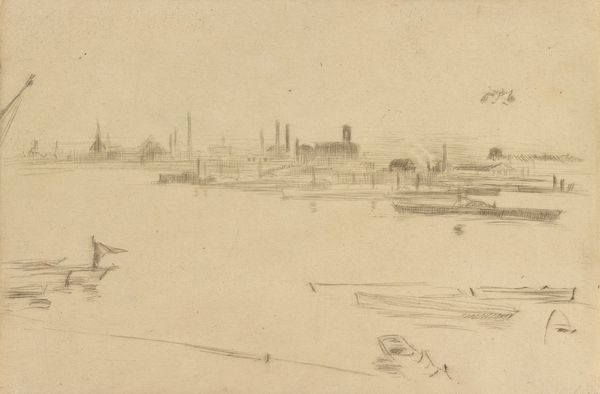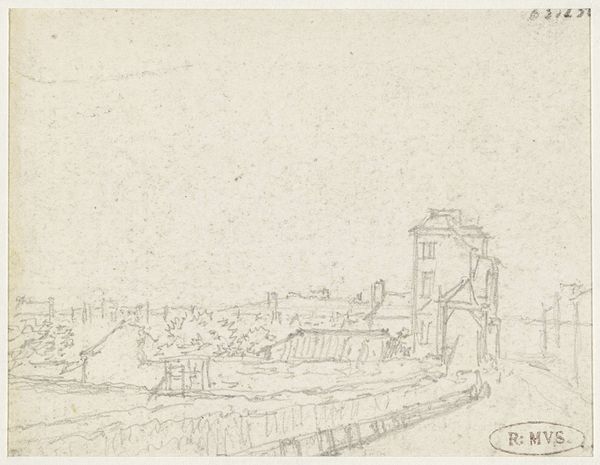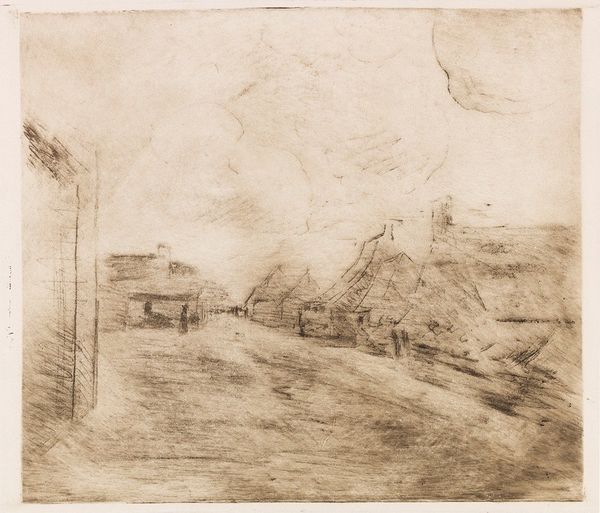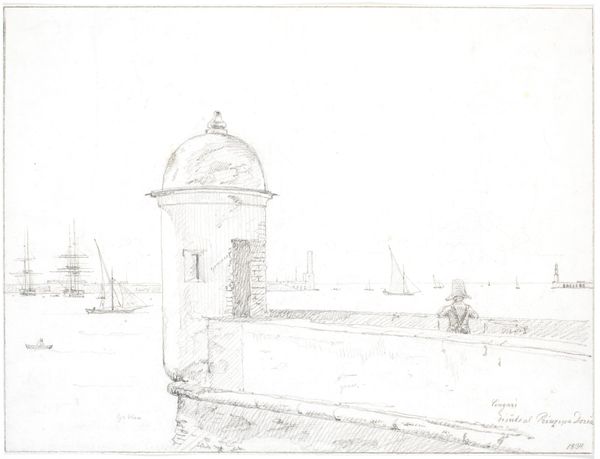
drawing, pencil
#
drawing
#
neoclacissism
#
landscape
#
classical-realism
#
perspective
#
pencil
#
cityscape
#
academic-art
Dimensions: 220 mm (height) x 343 mm (width) (bladmaal)
Constantin Hansen rendered this landscape of the Villa Albani gardens with graphite. The classical architecture evokes the enduring influence of antiquity on European culture. Dominating the composition is a tall obelisk, a symbol originating in ancient Egypt, representing the sun god Ra and themes of resurrection and stability. The obelisk’s journey across time, from ancient Egypt to Rome and beyond, reveals its astonishing ability to accumulate cultural significance. Once a symbol of royal power and religious devotion, it was re-contextualized by the Romans as a spoil of conquest and an emblem of imperial authority. In the Renaissance, obelisks were again repurposed, this time adorning prominent urban spaces as symbols of papal power and classical revival. The Villa Albani obelisk shows a collective desire to connect with a glorious past. It serves not only as a visual marker but also as a profound link to the history of civilizations. It is a testament to the cyclical nature of history, as symbols resurface and evolve, engaging our subconscious on a primal level.
Comments
No comments
Be the first to comment and join the conversation on the ultimate creative platform.
